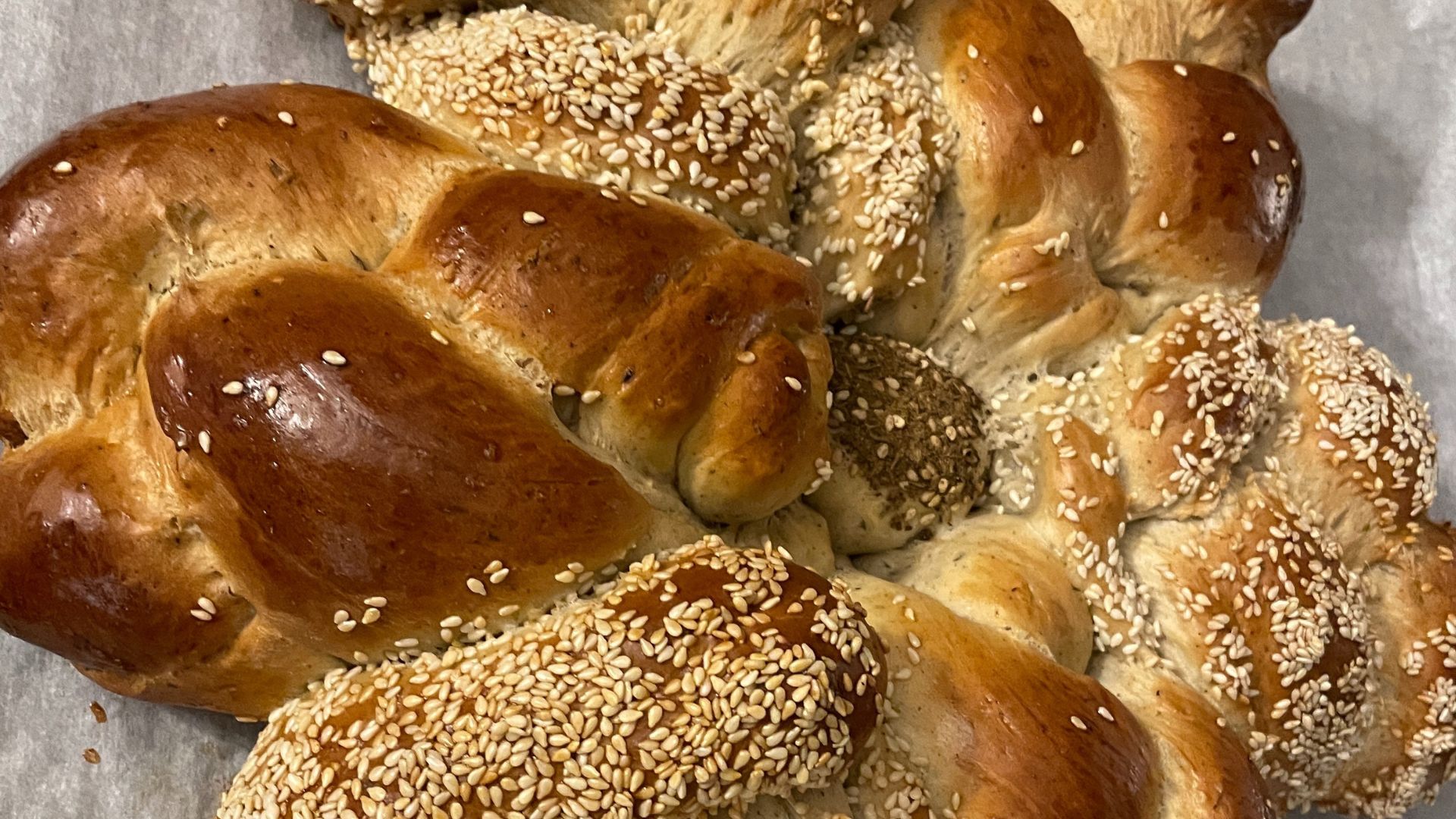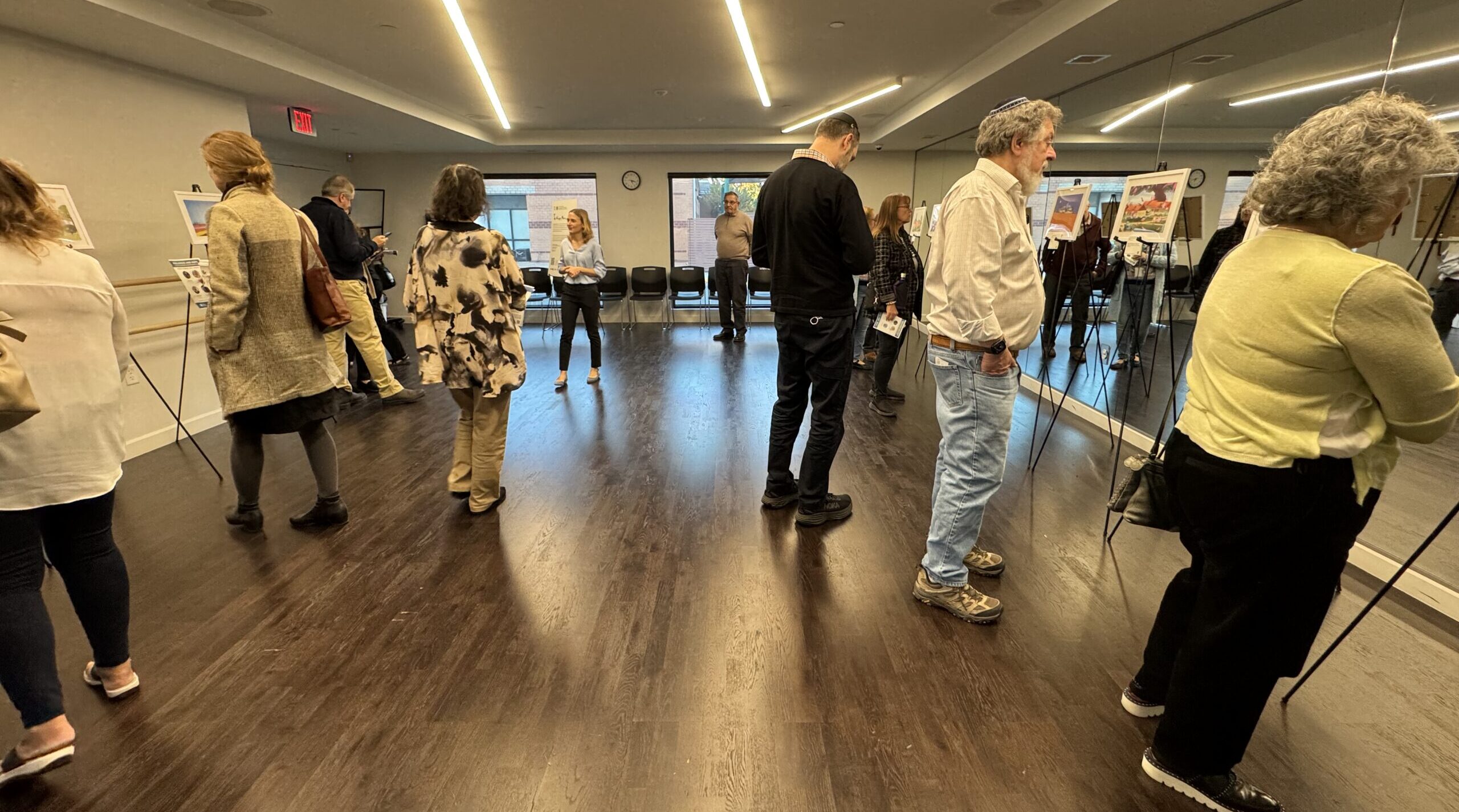For 18 years, the shlichut program at the Pozez Jewish Community Center has served as a living bridge between Israel and NoVa. Through the presence of an Israeli emissary, or shaliach, the program has offered a personal connection to Israel for community members, many of whom have never visited the country or met an Israeli before.
“It’s one thing to meet an Israeli by chance,” said Zina Segal, senior director of community engagement at Pozez JCC. “It’s another to meet a shaliach who has been trained to answer complicated questions, share their own story, and create spaces for dialogue. That is the unique power of this program.”
L’hitraot to Dean Bagdadi
This August, the community bid farewell to Dean Bagdadi, who concluded three years as Pozez JCC’s senior shaliach. From his earliest days, Dean embedded Israel as a central pillar of community life, through headline events like vigils with more than 1,000 attendees, and through quieter gatherings like weekly discussion circles and coffee dates.
Dean’s authenticity left a mark.
“He touched so many lives because he was open and nonjudgmental,” Zina reflected. “People felt they could ask him anything, and he would meet them with patience and calm.”
October 7 transformed his work overnight. Just 30 hours after the Hamas attacks, Dean convened an impromptu gathering of clergy, professionals, and community members. Days later, he helped lead a massive vigil uniting synagogues across denominations. The months that followed brought a surge of engagement, as people sought connection, solace, and understanding.
“In a short time, Dean drastically shifted the environment in Northern Virginia, helping us to build bridges and connections with one another,” said community member Aviva Walls. “He led with his heart, and we all felt it.”
A New Beginning with Chen Sara
With Dean’s departure, the program now enters a new chapter. The community welcomed a new shlicha in August: Chen Sara Mordechai-Kedar.
“Dean filled his shoes, and now Chen Sara brings her own,” Zina said. “Every three years we bring someone new with different skills, experiences, and perspectives, so the community connects with Israel in fresh ways.”
Chen Sara, a self-described “community nerd,” says people are her hobby. She thrives on dialogue, believing no question is too rude if it comes from genuine curiosity. Chen Sara, a half-Mizrahi and half-Ashkenazi Jew who identifies as LGBTQ+, will lean on her multifaceted identity to bridge differences and foster belonging.
Her story is deeply global. After her army service, she spent time in Cambodia, where she helped establish a sustainable community clinic that still operates today. “I see this work as an expression of tikkun olam, repairing the world,” she said. She also carries insights from Israel’s travel culture, noting that “Israelis often prioritize exploring the world over comfort at home, an impulse that reflects our deep curiosity and adventurous spirit.”
Above all, Chen Sara wants to open doors for dialogue, even across divides. She dreams of creating open, respectful spaces where people who generally disagree with one another can talk face-to-face productively.
Why Shlichut Matters
The shlichut program in NoVa is one of only two in the region, despite being home to the largest Jewish population in the DC area. For Zina, that makes it especially meaningful.
“Shlichut is about more than programs,” she said. “It’s about relationships. It’s about welcoming someone into our community who shares their life story and, through that, helps us strengthen our own Jewish story.”
As the community reflects on Dean’s impact and warmly embraces Chen Sara’s fresh perspective, the through-line is clear: Pozez JCC’s shlichut initiative is not merely for our community to learn about Israel or meet an Israeli, but to sustain a living and lasting bridge to Israel. By hosting, supporting, and integrating our Israeli emissaries, the J is ensuring that this connection continues to help shape the Northern Virginia Jewish community year after year.
















